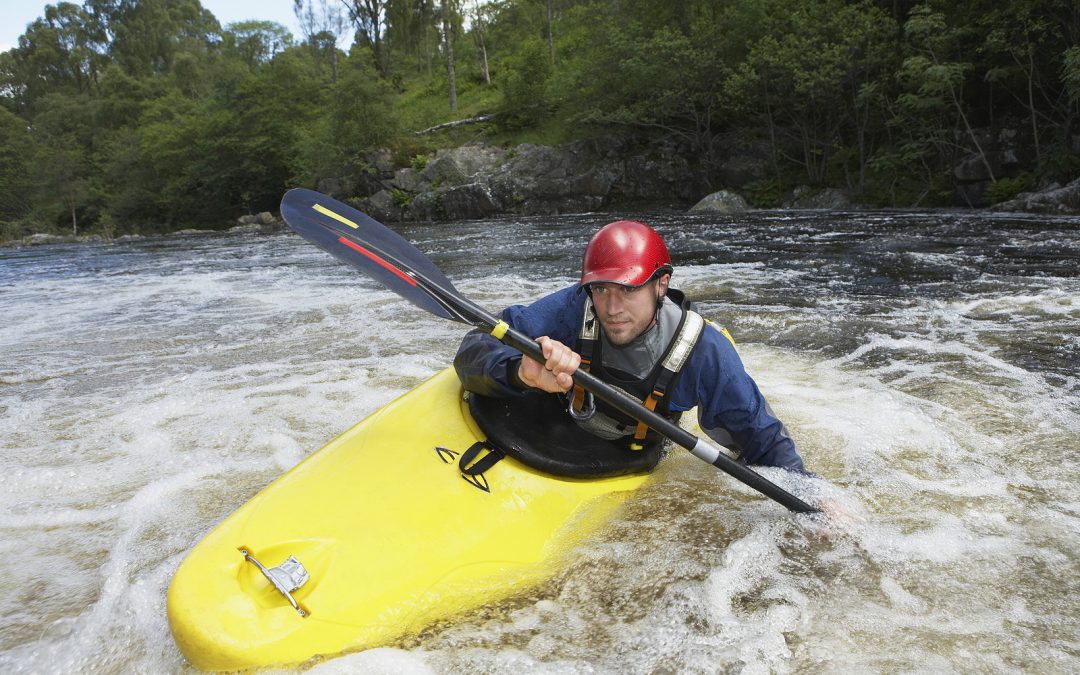Selecting the best kayak cart is essential for those who want to make transporting their kayaks to the water an easy and stress-free experience. Investing in the right kayak cart can save time, prevent potential damage to your kayak, and make your overall kayaking experience more enjoyable. This buyer’s guide aims to help beginners and experienced kayakers make an informed decision when selecting the perfect kayak cart for their needs.
There are various types and styles of kayak carts, such as foldable, built-in, and all-terrain carts. As a buyer, you should consider factors like weight capacity, wheel type, material, and ease of use when selecting a kayak cart. Finding a coach that best suits your personal preferences and kayaking adventures is crucial.
Throughout this guide, we will explore the essential components and features of kayak carts and provide insights into different models available in the market. We hope to provide you with the information you need to make a confident and educated decision when purchasing your kayak cart, ensuring a seamless transportation experience for your kayak.
Understanding Your Kayaking Needs
Before choosing the best kayak cart, it’s essential to understand your specific kayaking needs to make an informed decision. Factors that will impact your choice include the type of kayaking you do and the frequency of your trips.
Kayaking Types
There are various types of kayaking activities, each with its own set of requirements. Let’s take a look at some common types:
- Recreational kayaking: Ideal for beginners and those who enjoy leisurely paddling on calm waters like lakes or slow-moving rivers. Lightweight and easy-to-use carts work well for these kayakers.
- Touring kayaking: Designed for those who prefer longer trips on larger bodies of water, such as coastlines or open seas. Touring kayakers need a robust and sturdy cart that can withstand the demands of more extended expeditions.
- Whitewater kayaking: This high-intensity kayaking involves navigating through rapids, typically found on fast-moving rivers. Durability is crucial, as intense water conditions can quickly cause damage to both the kayak and cart.
- Fishing kayaking: Ideal for those who love to fish in various water bodies. A stable and rugged cart that can handle additional fishing gear is critical for this kayaking type.
Frequency of Use

Another essential factor is how often you’ll use your kayak cart. Carts come in various designs and materials to accommodate different usage levels.
- Occasional use: If you only kayak occasionally, a simple, easy-to-use cart with a more budget-friendly price may be suitable. These carts can still provide adequate support for your kayak but may not have all the bells and whistles as higher-end models.
- Regular use: A sturdy and durable cart designed to withstand consistent usage would be an intelligent choice for kayakers who paddle more frequently. These carts are more expensive but provide enhanced features like adjustable width, higher load capacity, and puncture-proof wheels.
Considering these factors, identify your kayaking needs and select a kayak cart that caters to your specific requirements. This assessment will ensure you maximize your investment and enhance your kayaking experience.
Features of Kayak Carts
Types of Wheels
Various types of wheels are available for kayak carts, each serving a specific purpose. Common types include:
- Air-filled wheels provide a smooth ride and are great for soft surfaces like sand or grass. However, they require periodic inflation and can be punctured.
- Solid rubber wheels: Durable and puncture-resistant, these wheels work well on hard surfaces. They may require more effort on soft terrains, though.
- Balloon wheels: Explicitly designed for sand, these wheels disperse weight efficiently, preventing sinking. Their performance on hard surfaces could be more optimal.
Material and Durability
The selection of materials used in kayak carts directly affects their durability. Common materials include:
- Aluminum: Lightweight and rust-resistant aluminum kayak carts are great for portability. However, they may not be as durable as their steel counterparts.
- Steel: Heavier and muscular steel kayak carts offer increased stability and durability. The downside is their susceptibility to rust.
Weight Capacity
Different kayak carts have varying weight capacities, which is an essential factor to consider based on the size of your kayak:
- Lightweight coaches: Suitable for smaller kayaks, with a weight capacity of up to 150 lbs.
- Medium-duty carts: Able to carry up to 250 kg of kayaks, ideal for most recreational kayaks.
- Heavy-duty carts: Designed to manage larger, heavier kayaks, usually with a weight capacity of 300 lbs or more.
Portability
Several factors contribute to the portability of a kayak cart. These include:
- Collapsible design: Some coaches can be disassembled or folded for easy storage and transport.
- Weight of the coach: Lighter carts are easier to carry, while heavier carts may be better suited for rugged terrain.
- Wheel removal: Quick-release wheels simplify transportation and storage.
Brand Considerations

Reputation
When choosing a kayak cart, it’s crucial to consider the brand’s reputation. Well-known brands often have a history of producing quality gear and can provide peace of mind that you are purchasing a reliable product. Some popular kayak cart brands include C-Tug, Sea to Summit, and Malone. To assess a brand’s reputation, research its history, and look for any awards or industry recognition they have received. Avoid brands with numerous adverse reports or a history of product recalls.
Customer Reviews
No one knows a product better than those who have already purchased and used it. Before deciding on a kayak cart, read customer reviews from various sources such as online retail websites, blogs, and forums. Take note of any recurring issues mentioned by reviewers. Positive feedback on durability, ease of use, and quality can indicate a good product. However, take some reviews with a grain of salt, as individual experiences may vary.
Warranty
A warranty demonstrates a brand’s confidence in its product and is a valuable consideration when choosing a kayak cart. A more extended warranty period usually indicates a higher quality product. However, paying attention to the warranty’s terms and conditions is essential. Some may cover only specific parts, and others may require you to register the product within a particular timeframe. Comparing warranty offerings from different brands can be a way to narrow down your options and find the best kayak cart for you.
Formatting options:
- Well-known brands: C-Tug, Sea to Summit, Malone
- Key factors: Durability, ease of use, overall quality
- Warranty features to consider: Length, terms and conditions, registration requirements
Price and Value
When selecting the best kayak cart, it’s essential to consider both price and value. This means finding a coach that offers excellent performance and durability while also fitting within your budget.
There are various price ranges for kayak carts, starting at $50 for basic models and going up to $300 or more for higher-end options. Determining what features are essential for your needs is crucial, and sticking to a budget is vital.
Keep in mind that a higher price sometimes guarantees better quality. Compare materials and construction among different models within your budget to ensure you get the best value. Quality materials such as aluminum or stainless steel frames and solid, puncture-resistant wheels can often be found in moderately priced carts.
Moreover, consider the ease of assembly and disassembly and the compactness of the kayak cart. These factors contribute to the cart’s overall value and your satisfaction with the product.
When comparing kayak carts, reading reviews from other paddlers who have used the same models can be helpful. Their experiences can provide insight into different options’ performance, durability, and value, allowing you to make a more informed decision.
In summary, finding the best kayak cart at the right price requires research, comparing features and materials, and evaluating user experiences. Always prioritize your needs and budget, and remember that sometimes the best value can be found in a moderately priced option.
Final Checklist Before Purchase
When selecting the best kayak cart, it is essential to consider a few crucial factors. First, assess your kayak’s size and weight. Remember that the coach should be able to handle the dimensions and load without causing damage or compromising stability.
Secondly, consider the type of terrain you’ll be traversing. Various wheel types are available, such as air-filled, solid, and balloon wheels. Air-filled wheels perform well on solid ground, while balloon wheels are better suited for sandy beaches or challenging terrain.
Another critical factor is the material and construction of the cart. Look for sturdy, durable materials such as aluminum or stainless steel, which effectively resist corrosion, especially when exposed to harsh environments or salt water. Additionally, please pay attention to the quality of the straps, ensuring they are sturdy enough to keep your kayak secure during transportation.
Furthermore, think about the ease of assembly and disassembly. A good kayak cart should be simple to assemble and take apart, even without using tools. This will enhance your overall experience and save you time when preparing for your kayaking adventures.
Lastly, compare prices and read customer reviews before making a final decision. It will give you insights into the performance and reliability of various kayak carts on the market. Remember that spending a little extra on a high-quality coach can be a worthwhile long-term investment.
Keep these factors in mind as you search for the ideal kayak cart. Doing so ensures that your choice meets your needs and enhances your kayaking experience.
What is the best way to use a Kayak cart?
The best way to use a kayak cart involves a combination of proper technique, safety measures, and care for your kayak. Here’s a step-by-step guide on effectively and safely operating a kayak cart.
By following these steps and using the kayak cart carefully, you can safely and efficiently transport your kayak to and from the water, reducing the strain on your back and ensuring your kayak remains in excellent condition.

What to Look for when Buying Kayak Cart

When buying a kayak cart, several essential components must be considered to ensure you choose the right coach. A kayak cart helps you transport your kayak from your vehicle to the water and vice versa, making it an essential accessory for kayakers. Here’s what to look for when buying a kayak cart:
- Weight Capacity: Explore the weight capacity of the cart to ensure it can handle the weight of your kayak. Consider the weight of your kayak, any gear you might be carrying, and choose a coach that can comfortably support that weight.
- Type of Cart: There are different types of kayak carts available, such as sit-on-top carts, scupper-hole carts, and strap-style carts. Choose the kind that is compatible with your kayak’s design. For example, sit-on-top carts are suitable for kayaks with an open cockpit, while scupper hole carts fit kayaks with scupper holes designed for drainage.
- Wheel Type: Look for sturdy and durable wheels. Larger inflatable wheels or rubber tires with tread patterns are great for tackling different terrains, including sand, gravel, and uneven surfaces. These wheels provide better stability and ease of movement.
- Frame Material: Choose a cart with an aluminum or stainless steel frame. These materials are lightweight yet strong enough to handle the weight of your kayak.
- Adjustability: Opt for a cart with adjustable features, such as width or length, to ensure a secure fit for your kayak. This is particularly important if you have multiple kayaks of different sizes.
- Portability: Consider how compact and easy it is to transport the cart when unused. Some coaches can be folded down or disassembled for convenient storage in your kayak or vehicle.
- Attachment Mechanism: Check how the cart attaches to your kayak. Some coaches use straps, while others have special attachments that fit into scupper holes or around the kayak’s cockpit. Ensure that the attachment mechanism is secure and won’t damage your kayak.
- Ease of Use: Look for a cart with a simple and intuitive setup process. Complicated assembly or attachment mechanisms can be frustrating, especially when quickly getting your kayak to the water.
- Weight of the Cart: Consider the importance of the cart itself. Lighter coaches are easier to handle and transport but must still be sturdy enough to support your kayak.
- Reviews and Recommendations: Read reviews from other kayakers who have used your chosen cart. Their experiences can give valuable insights into the cart’s performance, durability, and overall usability.
- Price: While price is a consideration, don’t solely base your decision on the cheapest option. Investing in a quality kayak cart will provide better performance and longevity.
Considering these factors, you can choose a kayak cart that suits your needs and helps make your kayaking adventures more enjoyable and convenient.
Conclusion
Selecting the best kayak cart involves considering various factors, such as the type of kayak, the terrain one encounters, and the desired portability. It’s essential to evaluate the different styles of carts available, including end-loading, scupper hole-loading, and strap-loading designs.
When examining options, pay attention to the materials used in construction, as durability is critical for prolonged use. Additionally, wheel type is crucial in determining the cart’s overall performance, with large, inflatable wheels optimal for sandy beaches and smaller, solid wheels for rougher terrains.
Finally, ensuring that the chosen cart can safely and securely hold the kayak during transportation is vital. By considering all these aspects and weighing the advantage and disadvantages of each option, one can make an informed decision and choose the best kayak cart for their needs.












